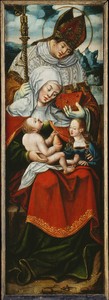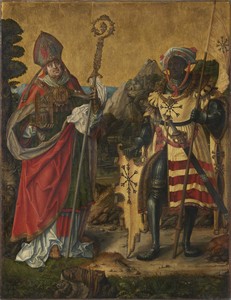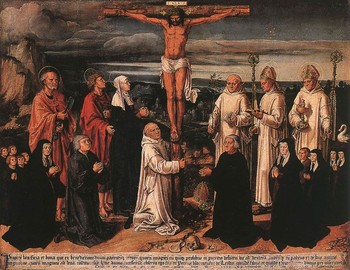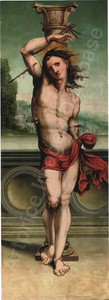Anton von Woensam
Altar wing with Saint Mark standing in a niche, holding an open book
Oil on panel : 90 X 26,8 cm
Unsigned
Dated 1534
Unsold at Sotheby’s London, 5/07/07
Estimate : 20.000 – 30.000 £ (+ buyer’s premium) = 40.000 – 60.000 € (+ BP)
This is a comparative item

Painting for Sale
Comparative paintings
Click photos for more details






